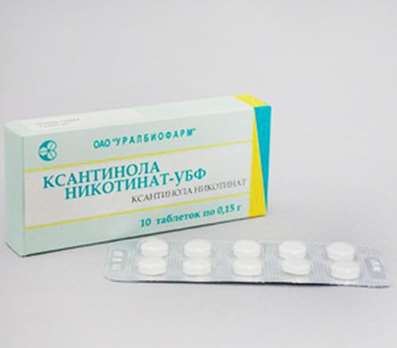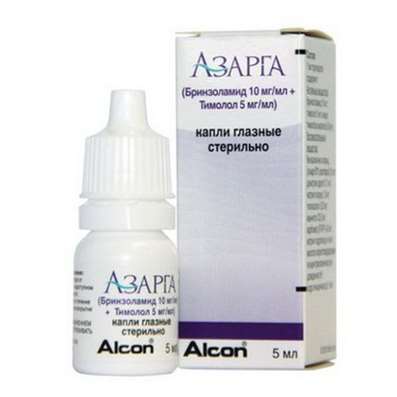Cyanocobalamin
28 Dec 2016
Pharmacological group: Vitamins; Vitamin B complex
Pharmacological action: vitamer vitamin B12. In the body (primarily in the liver) is converted into methylcobalamin and 5-deoxy-adenosyl cobalamin. Methylcobalamin is involved in the conversion reaction of homocysteine to methionine and S-adenosylmethionine - key metabolic reactions pyrimidine and purine bases (and hence DNA and RNA). When vitamin deficiency in this reaction it may replace methyl-tetrahydro-folic acid, wherein the reaction folic acid needs for disturbed metabolism. 5 5-deoxy-adenosyl cobalamin serves as a cofactor for the isomerization of L-methylmalonyl-Cola in succinyl CoA - important reactions of carbohydrate and lipid metabolism. B12 vitamin deficiency leads to disruption of the proliferation of rapidly dividing cells of the hematopoietic and epithelial tissue, as well as to disruption of neuronal myelin sheath formation.
Molecular formula: C63H88CoN14O14P
Molar mass: 1355.38 g / mol
Appearance: dark-red solid
Melting point:> 300 ° C
Boiling point:> 300 ° C
Solubility in water: good
Cyanocobalamin is the most common and widely produced chemical compound having vitamin activity vitamin B12. Vitamin B12 - is the common name of any vitamer vitamin B12. Since the body is able to convert cyanocobalamin active compound in any B12, cyanocobalamin itself a form (or vitamers) B12, although largely an artificial joint. Cyanocobalamin is not usually found in living organisms, but animals can convert commercially produced in the active cyanocobalamin (cofactor) form of the vitamin, such as methyl cobalamin. Cyanide released in this process is so small that it is negligible toxicity.
Chemical properties of Cyanocobalamin
Cyanocobalamin is the most widely known and of vitamers produced vitamin B12 family (family of chemical compounds that function as B12 in the body), as the more stable cyanocobalamin is exposed to air to form B12. It is amenable to crystallization the easiest and hence most simply cleaned after production by bacterial fermentation or synthesis in vitro. It can be obtained in the form of dark red crystals or amorphous red powder. Cyanocobalamin is very hygroscopic in the anhydrous form and has a moderate solubility in water (1:80). It is resistant to sterilization in an autoclave for a short period of time at a temperature of 121 ° C. Coenzymes Vitamin B12 is very unstable to light. Animals cyanide ligand substituted with other groups (adenosyl, methyl), which represent the biologically active form. The remainder of the cyanocobalamin is unchanged.
chemical reactions
Cobalt central atom generally exists in the trivalent state, Co (III). However, when subjected to different reduction conditions cyanocobalamin central cobalt atom may be reduced to Co (II) or Co (I), which are commonly referred to as B12r and B12S respectively. B12S B12r and can be obtained from cyanocobalamin by controlled reduction or by chemical reduction using sodium borohydride in alkaline solution, zinc in acetic acid or by exposure to thiols. As B12r, and B12S are indefinitely stable in anoxic conditions. B12r in solution acquires an orange-brown color. With natural daylight B12S bluish-green color, and under artificial lighting - purple. B12S - this nucleophilic particles that make up the aqueous solutions and are often called "super-nukleofils". This feature allows you to create convenient preparations of cobalamin analogues with various substituents through nucleophilic attack on the deputy or unsaturated halogenated substituents. For example, cyanocobalamin may be transformed into analogues via reduction to cobalamins B12S, followed by addition of the corresponding alkyl halides, acyl halides, alkene or alkyne. Difficulties associated with sterols - is the main limiting factor in the synthesis of coenzyme B12 analogues. For example, there is no reaction between chloride and neopentyl B12S, a secondary alkyl halide analogues are too unstable to isolate. Studies suggest that this is due to the strong coordination between the benzimidazole and the central atom of cobalt, pulls it in the plane of the corrin ring. Trans-effect also determines the polarizability of communication Co-C. However, once separated from the cobalt benzimidazole when quaternization with methyl iodide, it is replaced by hydroxyl ions or H2O. Various secondary alkyl halides then easily attacked B12S modified to give the corresponding stable analogues of cobalamin. The products typically recovered and purified by phenol extraction or column chromatography methylene chloride. Cobalamin analogues obtained in this manner include natural and cobalamid coenzymes methylcobalamin as well as other cobalamins which do not occur in nature, for example, vinilcobalamin, and carboxymethylcobalamin , cyclohexylcobalamin. This reaction is currently being developed for use as a catalyst for chemical dehalogenation, the organic reactant and the catalyst system photosensitized.
Production of cyanocobalamin
Cyanocobalamin is commercially produced by bacterial fermentation. When fermentation of various microorganisms using a mixture of methyl, hydroxo and adenosylcobalamin. These compounds are converted to cyanocobalamin by adding potassium cyanide in the presence of sodium nitrite and heat. Since most species of Propionibacterium produces endotoxins or exotoxins and has GRAS status (i.e., is generally considered as Safe) in the US, it is currently considered the most preferred bacterial fermentation organisms to produce vitamin B12. Historically, a form of vitamin B12 is hydroxocobalamin is often produced by bacteria, and then, in the course of purification after separating the activated carbon from bacterial cultures and transformed into cyanocobalamin. The first extraction of vitamin B12 that change was not immediately understood. Cyanide is naturally present in the activated carbon, hydroxocobalamin and having a high affinity for cyanide, and creates its takes cyanocobalamin. Cyanocobalamin is found in most pharmaceuticals, since the addition of cyanide to stabilize the molecule. France provides 80% of world production of cyanocobalamin. In the year sold more than 10 tons of this compound, 55% of all sales come from animal feed, and the remaining 45% - for human consumption.
Pharmaceutical use of Cyanocobalamin
Cyanocobalamin is usually prescribed for the following reasons: after complete or partial surgical removal of the stomach or intestines, to provide an adequate level of vitamin B12 in the blood, for treatment of pernicious anemia; vitamin B12 deficiency due to its low income from the food; thyrotoxicosis; hemorrhages; cancer, liver and kidney. Cyanocobalamin injections often prescribed for patients with gastric bypass anastomosis, with bypass part of the small intestine, hinders the absorption of B12 from food and vitamins. Cyanocobalamin is also used in the Schilling test to identify a person's ability to absorb vitamin B12.
The end products of the treatment of cyanide poisoning
In cyanide poisoning cases, the patient is given hydroxocobalamin, cyanocobalamin predecessor. Hydroxocobalamin binds with cyanide ion and forms cyanocobalamin, which then can be released through the kidneys. Hydroxocobalamin has been used for many years in France and in December 2006 was approved by the FDA under the trade name Cyanokit.
Possible side effects of cyanocobalamin
Oral administration of cyanocobalamin may occur a number of allergic reactions such as hives, difficulty breathing, swelling of the face, lips, tongue, or throat. Less serious side effects may include headache, nausea, indigestion, diarrhea, joint pain, itching or a rash. In the treatment of certain forms of anemia (eg, megaloblastic anemia), the use of cyanocobalamin can result in severe hypokalemia, sometimes fatal (but the same effect is to be observed when taking any vitamer B12 is, not only cyanocobalamin). In the application of vitamin B12 Leber's disease patients may suffer from rapid atrophy of the optic nerve. Vitamin B12 forms for injections (such as hydroxocobalamin itself) is generally available as pharmaceuticals, and are the most frequently used injectable forms of vitamin B12 in many countries. cyanocobalamin injections are the most common forms of vitamin B12 injections in the United States.
Availability:
Cyanocobalamin is used for conditions involving a deficiency of vitamin B12. Dispensed by prescription.

 Cart
Cart





